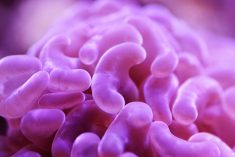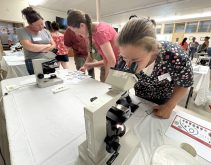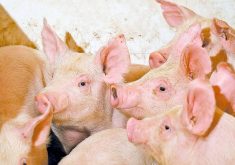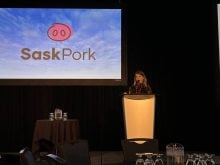The long-awaited Goat Code of Practice update is poised for distribution after the pandemic affected its original delivery timeline.
“We had vets, producers, people from all different backgrounds spend four years trying to establish what the minimum standard should look like for our industry,” said Amy Vingerhoeds, Canadian National Goat Federation industry liaison.
She and Peter Kerkvliet, a goat producer and chair of the code development committee, presented an overview of the changes at the Jan. 6 Grey Bruce Farmers’ Week Goat Day.
Read Also
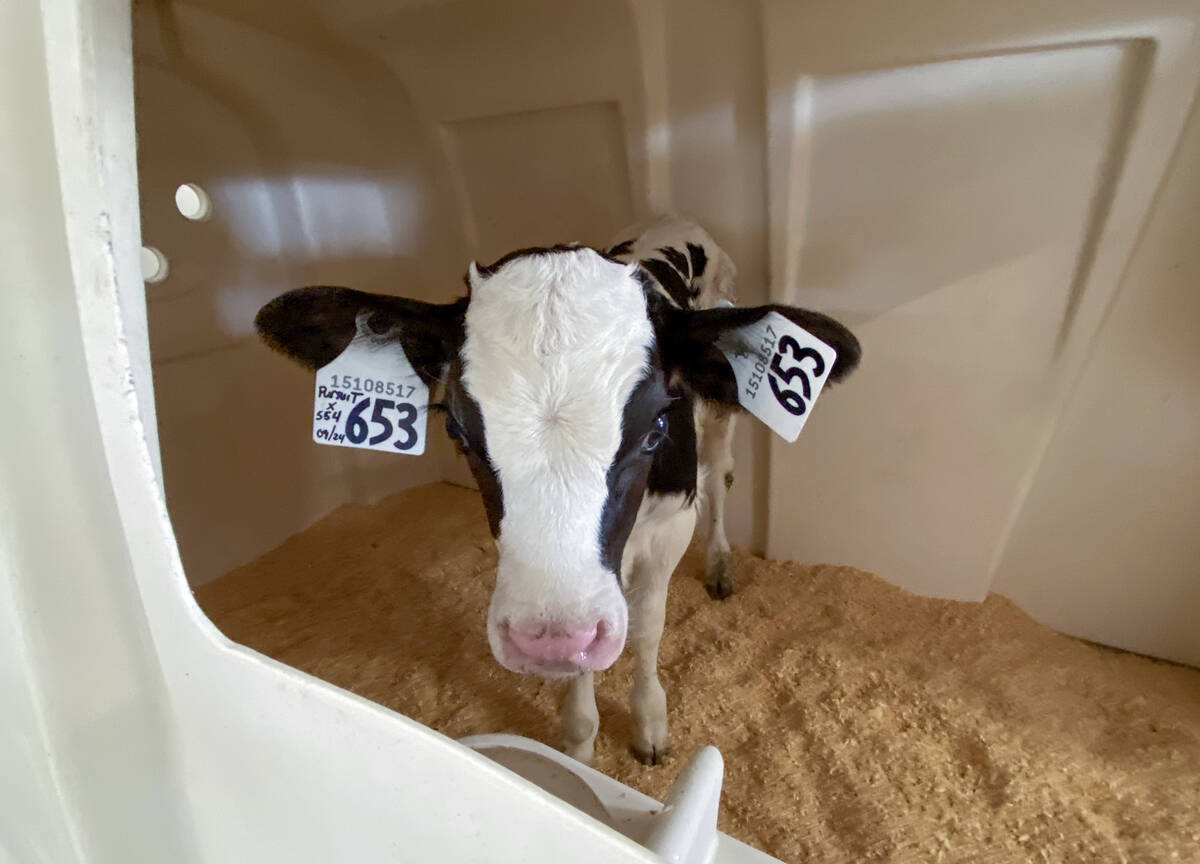
Lactanet turns methane expertise into business opportunity
Lactanet’s new fee-for-service breeding tool initiative to reduce greenhouse gas emissions in Canadian and Swiss Holstein herds will launch in April 2026.
Why it matters: The revised Goat Code of Practice is the first update since 2003.
“People involved in the goat industry have a lot of diverse opinions and perspectives,” said Vingerhoeds. “This alone means getting to the finish line and having a completed document is a big deal.”
The new code requirements are highlighted in yellow sections throughout the document. Hard copies will be available shortly, said Vingerhoeds, and a digital version can be downloaded from the National Farm Animal Care Council website.
[RELATED] Ontario Dairy Goat Co-operative celebrates 20 years
It’s compulsory to provide goat operation workers with access to the code and everyone in the industry must have a working knowledge of and comply with code requirements.
Vingerhoeds urged producers to invest the time needed to read it carefully, because “I didn’t know” is not a valid excuse for non-compliance.
Two presenters noted what Kerkvliet considered key additions to code requirements: barn ventilation and colostrum quality.
“It’s nice when the code actually reflects the science of the day,” he said. “That’s where the science committee tried to incorporate the best science we could in making recommendations.”
The goat housing section addresses several requirements including pen design, enrichment, ventilation and air quality. The latter can be a challenge for goat farms, said Kerkvliet.
For example, if condensation is apparent on surfaces or in the air, producers must take prompt corrective actions.
“That might be as simple as opening the curtains or turning more fans on, simple things like that to remove moisture,” he said. “And corrective action must be taken if ammonia is either detected by smell or levels are more than 25 ppm (parts per million).”
The code states that natural or manufactured shelters must keep goats clean and dry and mitigate the harmful impacts of rain, wind and extreme temperatures. Additionally, pen design must prevent accidental entrapment, have no sharp edges or protrusions capable of injuring goats and provide animals with access to one form of enrichment.
“That could be grooming brushes in a pen, platforms they can climb on — anything independent they could play with,” Kerkvliet said.
“Providing enrichment can have a long-term benefit such as reduced stress and aggression when exposed to changes in routine.”
The code indicates that stock persons must observe kidding, recognize the signs of difficulty and provide or seek assistance or involve a veterinarian to quickly address problems.
Kerkvliet said the code dictates that first colostrum must be provided as soon as possible after birth, ideally within the first two hours but no later than six.
Additionally, producers must feed 20 per cent of a newborn’s birthweight in colostrum within the first 24 hours, said Kerkvliet, with all colostrum equipment cleaned, sanitized and dried after each use.
“These are minimal requirements. We heard earlier (in a presentation) that measuring the quality of colostrum is important so we can get a good immune transfer,” he said. “This is a really important stage in the life of the kid. If we don’t do this right, we’ll have variable outcomes for the babies.”
The updated code requires that goats have access to clean, safe and sufficient quantities of water and feed that match the nutritional needs appropriate to the species, age, size, stage and level of production.
For example, kids six weeks and younger must have access to milk and consume adequate amounts of forage, solid feed and water daily before weaning to maintain growth and health.
Stock persons must routinely monitor goat body condition and take remedial action if scores are below two or above four out of five.
“We should be using body condition scoring as much as possible,” said Vingerhoeds. “It really helps you know whether to adjust your feed or adjust your management, and you need to make these changes sooner rather than later.”
Husbandry practices, as with most requirements in the code, are built around the low-stress handling of goats and producer/staff education to minimize mistreatment, injury, pain and distress.
Lameness
Vingerhoeds said an important code addition is the requirement for hoof inspection every six months and trims as required.
“It’s something the whole goat industry should move forward on just to decrease lameness in general, and a really good place to start is with a trim,” she said. “You can always exceed minimum requirements and check your hoofs more often.”
Lame goats must be assessed and treated without delay, and herd lameness of five per cent or more requires investigation and action.
Non-ambulatory lame animals, those not responding to treatment and those in moderate to severe pain must be euthanized, according to the code.
Disbudding and dehorning
“This was a very contentious (issue) when we had to work through disbudding and minimize some pain,” said Kerkvliet. “We had to involve a lot of science here.”
Hot iron disbudding is to be administered by a trained person or veterinarian and be accompanied by pain control, such as an NSAID or local anesthetic given by a competent, qualified person. Use of caustic paste and clove oil is forbidden.
Kerkvliet uses NSAIDs and lidocaine when disbudding at his operation.
“They’re all very calm and quiet and sleeping (and) they feel no pain during the procedure,” Kerkvliet said. “That’s the level we’ve taken it to … (and) it definitely makes it a much more pleasant job for the people performing it and the babies.”
Dehorning is only acceptable when necessary for goat health and welfare, regardless of age, and must be performed by a veterinarian and accompanied by sedation, general or local anesthesia and peri-operative analgesia.
The code prohibits dehorning by banding, gougers, a Barnes dehorner or a Keystone dehorner.
“It’s a pretty dramatic procedure,” said Kerkvliet. “If we’re going to do any removal of horns, it’s got to be disbudding at an early age.”
Welfare
The code update requires all producers to establish and maintain a Veterinarian-Client-Patient Relationship (VCPR) and written records of disease events and treatments.
Treatment of sick, injured or suffering goats, including pain control, veterinarian drugs, nursing care and monitoring, must be applied promptly.
“The whole idea is, don’t prolong suffering,” said Vingerhoeds. “I think it’s something we can all do better — (making) those decisions more quickly, be more effective, and the goat has better welfare.”
When treatment isn’t an option, swift decisions on culling, shipping for slaughter or on-farm slaughter/euthanasia are required to limit animal suffering. The transportation section aligns the new code with regulations on goat handling during shipping and parameters that qualify or prohibit animal transport.
Tackling the topic of on-farm euthanasia or slaughter, and the appropriate action, can be difficult, said Kerkvliet.
“Correct landmarks and techniques need to be reviewed with the herd veterinarian,” he said.
A written euthanasia action plan indicating appropriate methods and secondary steps when using a captive bolt is required when anyone other than the owner or primary producer euthanizes an animal. He said the code’s appendix provides a page that fulfils the requirement.
“Always be prepared so that when euthanasia needs to be done, it can be done very effectively and quickly and cause as little pain and suffering as possible,” said Kerkvliet. “Responsible care and handling is good management, and it’s the right thing to do.”







